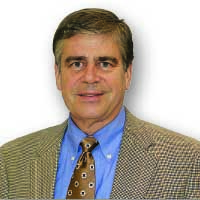The struggles of science: research funding dwindles
 One of the most exciting times of the year is early October when the Nobel Prize announcements are made. In science there is no higher award. My first realization of the importance of a Nobel Prize came when I was in my early teens while caddying at Champaign (Ill.) Country Club.
One of the most exciting times of the year is early October when the Nobel Prize announcements are made. In science there is no higher award. My first realization of the importance of a Nobel Prize came when I was in my early teens while caddying at Champaign (Ill.) Country Club.
Caddying at that time was pretty much like it was portrayed in the movie “Caddyshack.” We would be herded together in a decrepit shack at the end of the driving range until some of us were called to come to the clubhouse where we would sit on a bench until we were needed. One Saturday morning as I was sitting on the bench listening to my transistor radio, whispering started among the older caddies and the caddy master. I was then told to stand up straight. Soon this older gentleman in plaid shorts walks by, says hello and asks how we are doing. He then proceeds to the practice putting green.
My first question was, “Who is this guy?”
“Dr. Bardeen, the Nobel Laureate,” was the reply. It was a surprising scene to see the genuine respect shown by a bunch of caddies to this man. Dr. John Bardeen, Professor at the University of Illinois, is the only person to win two Nobel Prizes in Physics, the first for co-invention of the transistor (1956) and the second for the fundamental theory of superconductivity (1972).
This year the 2013 Nobel Prize in Physics went to Dr. Peter Higgs and François Englert, who in 1964 independently proposed how subatomic particles acquire mass, which is known as the Higgs particle or the God particle. It has taken almost 50 years for the Higgs particle existence to be confirmed. At the same time that this Nobel Prize was being announced, two previous Nobel Prize winners in physics (2001, 2012) were being furloughed during the government shutdown.
The 2013 Nobel Prize in Physiology and Medicine was shared among three individuals. James Rothman, one of those who shared the award, had recently lost his National Institute of Health (NIH) funding.
I believe that furloughs and reduced funding are symptoms of a devaluation we have placed on science. I am concerned where we are going from a science perspective not only nationally, but also at our own level of turfgrass research. Research funding at all levels, whether it is through NIH or turfgrass organizations/foundations and companies, is becoming extremely difficult. The cost of doing research that answers important questions increases while funding organizations struggle to maintain a flat budget line. The impact can be seen on who gets grants and who does not.
Data on a national level show in the area of medical research the number of investigators who received NIH grants under the age of 36 is less than 1 percent. In 1980 that percentage was closer to 18 percent. In a recent study it was found that in the last 30 years the average age of a medical researcher receiving their first NIH grant was 42. During this same period 96 scientists who won the Nobel Prize in medicine or chemistry working in the biomedicine area had an average age of 41 when they did the actual research. This means our future Nobel Prize winners will be one year younger than the age you would expect them to receive their first federal (NIH) grant.
I believe a concerted effort in the area of turfgrass research funding should be focused on young faculty and graduate students. The ideas and research conducted by these individuals will lead the advancement and health of our industry.
Why is this so important? Returning to Dr. James Bardeen, he was 36 years old when he submitted the first paper leading to the creation of the transistor. His first doctoral student was Nick Holonyak who, after graduating, invented the first useful light-emitting diode (LED).
Karl Danneberger, Ph.D., Golfdom‘s science editor and a professor at The Ohio State University, can be reached at danneberger.1@osu.edu.








